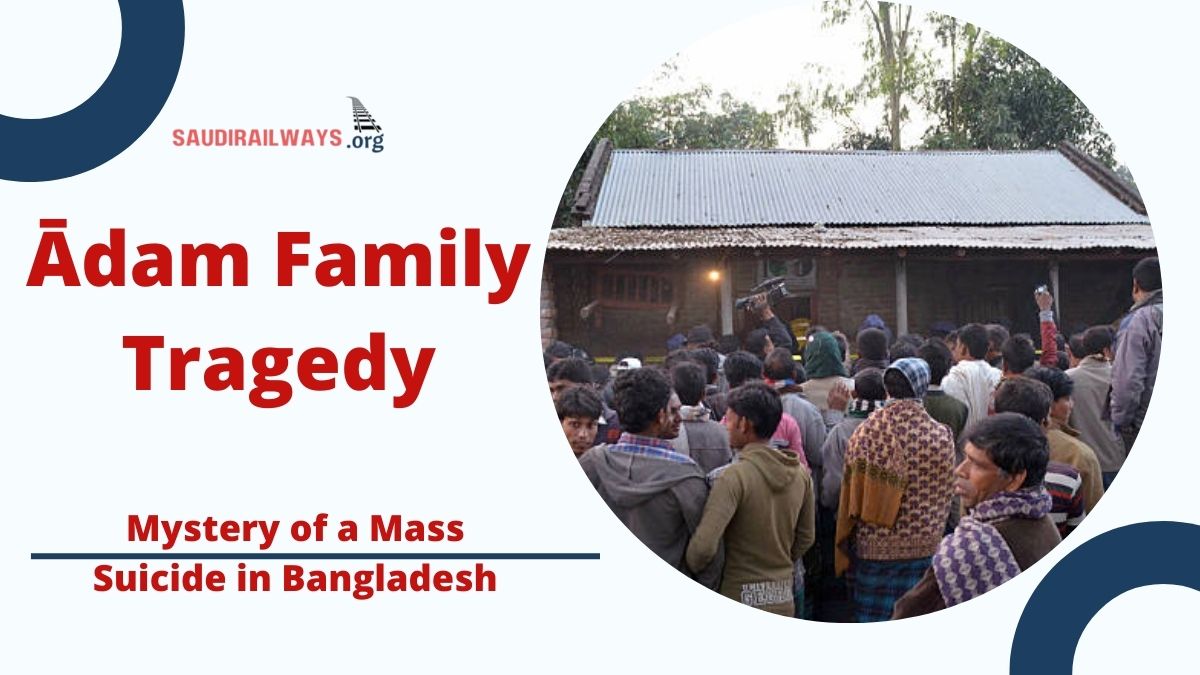In 2007, a shocking and enigmatic event unfolded in a small town in Bangladesh. Nine members of the Ādam family were found dead in what was initially reported as a mass suicide. The case quickly captured the attention of the nation, not only because of the tragic nature of the event but also because of the bizarre and highly unusual beliefs associated with the family.
At the center of this tragedy was the Ādam “religion,” an anti-Islamic faith founded by Abdul Ādam, the family patriarch, who had passed away seven years prior. Today, only one surviving member of the Ādam family remains, a daughter who managed to escape the mass suicide.
This incident, though widely reported in the media, remains shrouded in mystery. The suicide notes left behind by the family provide crucial insight into their final thoughts, but the broader implications of their beliefs and actions have sparked ongoing debate. Was this an act of religious zealotry, or was it the result of a shared delusion rooted in an underground, cult-like practice?
To understand the gravity of this tragedy, we must explore the Ādam family’s religious beliefs, their connection to anti-Islamic traditions, and the psychological factors that may have led to this devastating event.

Contents
The Ādam “Religion”: A Rejection of Orthodox Islam

The Ādam family’s faith was rooted in the concept of Be-shara, a tradition that rejects the orthodox practices of Islam. Be-shara, meaning “against the law,” is a subculture within the broader Muslim community in Bangladesh, characterized by a rejection of traditional religious dogmas and an embrace of unorthodox practices. The Ādam “religion,” as it was known, took this a step further by establishing a belief system that directly contradicted Islamic teachings.
Abdul Ādam, the family’s founder, was an outspoken critic of orthodox Islam. He encouraged his followers, primarily his family members, to abandon conventional religious practices in favor of a personal and alternative belief system. The Ādams’ spiritual practices were considered heretical by the mainstream Muslim community.
They believed in a set of principles that deviated from Islamic teachings, and their lifestyle became increasingly isolated from the broader society. This rejection of the dominant religious culture in Bangladesh placed them in a unique and controversial position.
A Shared Delusion: The Psychological Component
While the Ādam family’s rejection of orthodox Islam is undoubtedly central to their story, the events leading up to their mass suicide suggest that there may have been deeper psychological and social factors at play.
The suicide notes left behind by the family members reveal an unsettling narrative of delusion, which could point to shared psychological distress within the group.
The family’s belief system was not only anti-Islamic but also imbued with elements that suggest they may have been involved in what is known as “kufri kalam,” a term used to describe underground, satanic practices. Kufri kalam, which literally translates to “heretical speech” or “satanic discourse,” has been associated with taboo practices that are thought to involve occult rituals, dark forces, or practices in opposition to mainstream religious beliefs.
It is unclear whether the Ādams were genuinely involved in such practices, but the notion of a family consumed by a shared, underground belief in occult powers provides a chilling backdrop to their tragic end.
Many psychological experts argue that mass suicides within a group are often the result of collective delusion or groupthink. In this case, the Ādam family may have experienced a shared sense of hopelessness or fear, driven by their anti-Islamic beliefs and their possible involvement in occult practices.
The idea of a collective delusion—a belief so deeply ingrained that it overrides rational thought—could explain how nine members of the same family reached the point of taking their own lives.
The Media’s Role and the Lack of In-Depth Investigation
Despite the dramatic nature of the mass suicide, most Bangladeshi newspapers only reported the incident briefly, without delving deeply into the underlying causes.
While the tragedy garnered significant attention, few journalists or media outlets took the time to thoroughly investigate the Ādam family’s religious beliefs, their connection to anti-Islamic traditions, or the psychological dynamics that might have led to their demise. As a result, the true nature of their faith and the possible psychological factors at play have remained largely unexplored in the public discourse.
In fact, the case of the Ādam family highlights a broader issue in the media landscape of Bangladesh: a reluctance to explore taboo subjects or challenge deeply held religious norms. The family’s beliefs were so far removed from the mainstream religious practices of the country that the media, instead of investigating the incident from multiple angles, quickly dismissed it as a strange and tragic event.
The Legacy of the Ādam Family Tragedy
The Ādam family mass suicide remains one of the most perplexing and tragic events in recent Bangladeshi history. The loss of nine lives, each of them shaped by a set of deeply unconventional religious beliefs, raises important questions about the boundaries of faith, psychological influence, and the power of group dynamics.
While much of the media focus has been on the family’s rejection of orthodox Islam, the deeper, psychological layers of the tragedy offer important lessons about the risks of extreme beliefs and the psychological consequences of collective isolation.
Today, only one member of the Ādam family survives. The daughter, who was not part of the mass suicide, is left to carry the weight of this tragic chapter in her family’s history. Her experience, though largely undocumented, could provide critical insight into the psychological and social forces that contributed to the deaths of her relatives.
The Ādam family tragedy also serves as a reminder of the dangers of extreme belief systems and the potential for destructive consequences when individuals or groups become isolated from mainstream society.
While their religious practices may have been unique, the story of the Ādams is a cautionary tale about the intersection of faith, psychology, and the human capacity for delusion.
As the investigation into the Ādam family’s mass suicide continues to unfold, it is clear that the mystery surrounding their deaths is not just about a tragic loss of life but also about the complex interplay of belief, mental health, and the power of collective influence. The Ādam family’s story remains a haunting reminder of the fragility of the human mind and the potentially catastrophic effects of living in the grip of a shared delusion.

I am a passionate technology and business enthusiast, constantly exploring the intersection where innovation meets entrepreneurship. With a keen eye for emerging trends and a deep understanding of market dynamics, I provide insightful analysis and commentary on the latest advancements shaping the tech industry.
